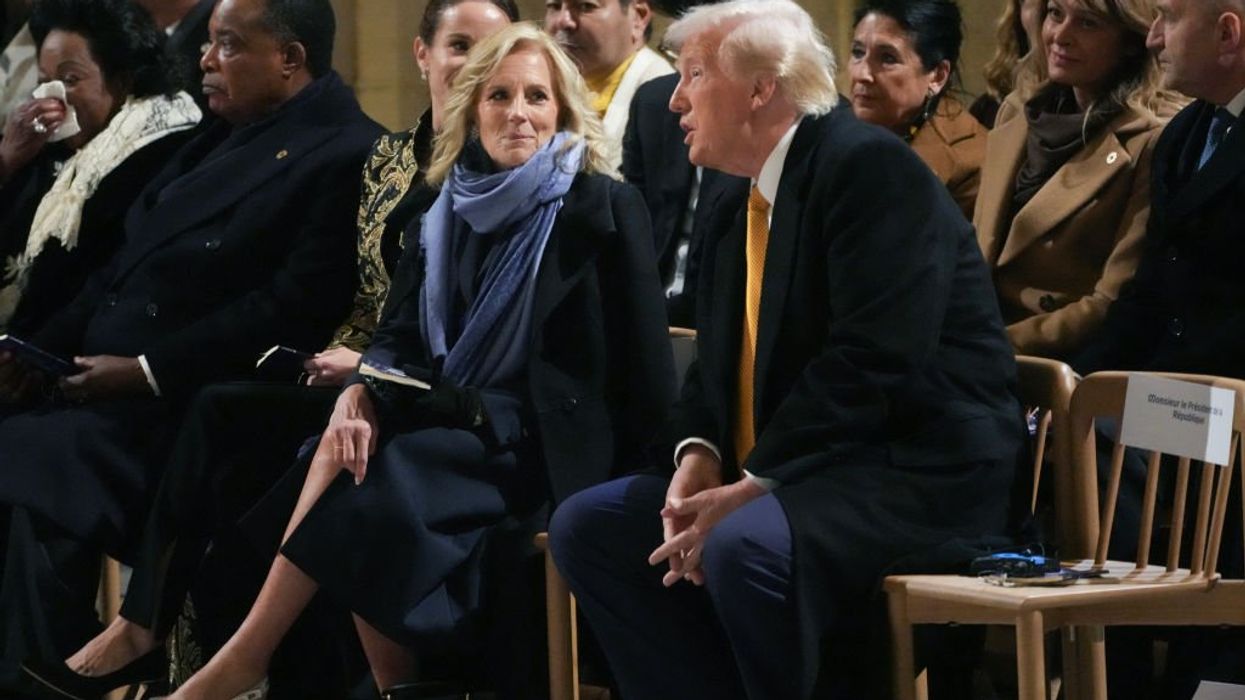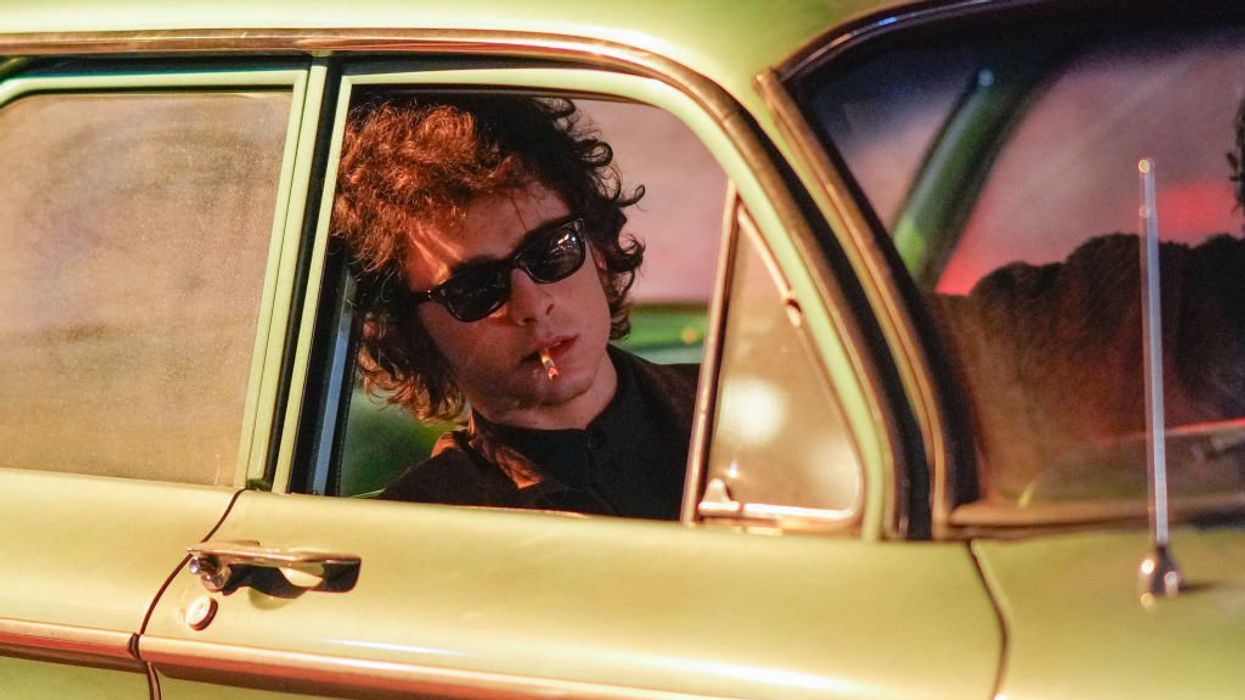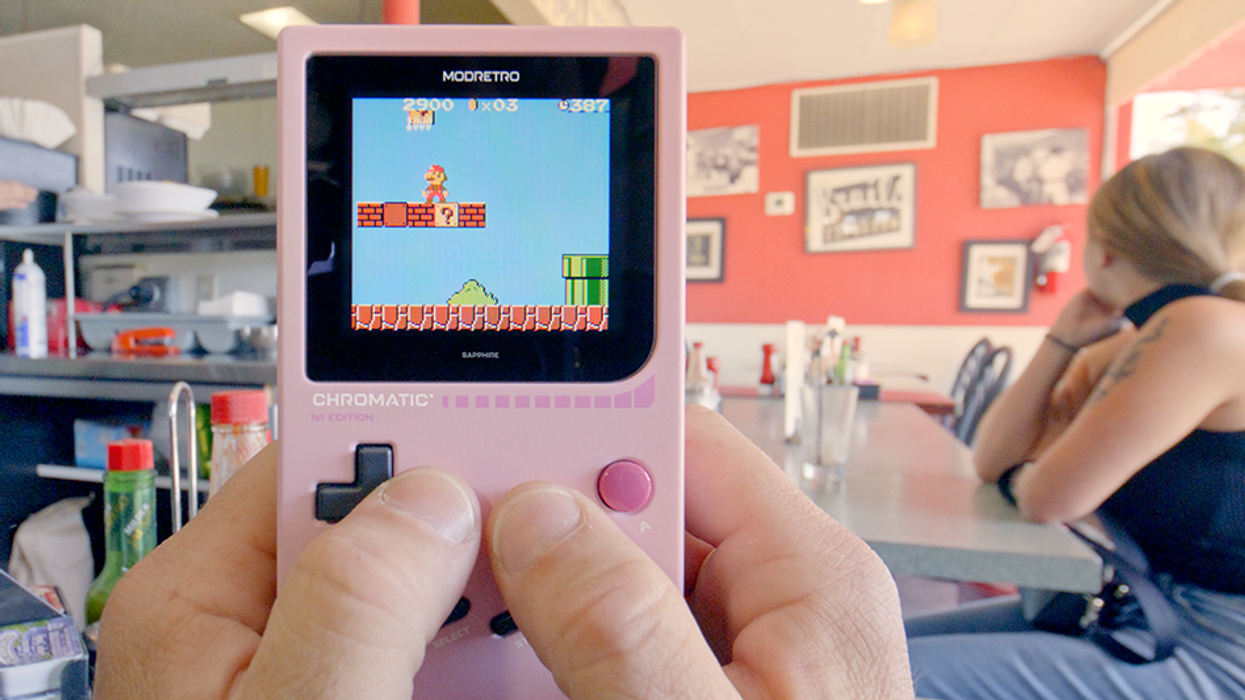
© 2024 Blaze Media LLC. All rights reserved.
Today Marks the 50th Anniversary of the Prayer Ban in Public Schools (& Here's the History)
June 25, 2012
"Too many school administrators took that decision as a green light to try to eradicate religion from public schools."
 It's been 50 years since the U.S. Supreme Court first ruled that government-endorsed prayer in public schools is unconstitutional. The landmark decision, which continues to lay at the center of the nation's debate over the separation of church and state, forever changed the way that faith and religion are handled in classrooms.
It's been 50 years since the U.S. Supreme Court first ruled that government-endorsed prayer in public schools is unconstitutional. The landmark decision, which continues to lay at the center of the nation's debate over the separation of church and state, forever changed the way that faith and religion are handled in classrooms.
The ongoing contention started when Steven Engel, a Jewish New Yorker, came together with other parents in 1958 to sue New York State over state-endorsed prayer that was being recited in schools. The Supreme Court inevitably sided with Engel and the decision was issued on June 25, 1962 -- a day that lives in infamy in the minds of many religious individuals and free-speech advocates.
The invocation in question was one that had been approved by the New York State Board of Regents. The prayer, which read, "Almighty God, we acknowledge our dependence upon Thee, and we beg Thy blessings upon us, our parents, our teachers and our Country," was relatively benign in nature. Still, the parents were adamant that it shouldn't be uttered in the public sphere.
Engel, who was joined by his wife and seven other parents, claimed that the prayer violated their religious beliefs and practices. Requiring that children utter it, they argued, violated their First Amendment rights, as the government, in their view, was establishing and promoting religion.
The group lost the initial case, as state courts found that the prayer was constitutional so long as it was voluntary (which it was). But, on an appeal, it was the Supreme Court that decided that government-endorsed prayer in schools is, indeed, unconstitutional. Encyclopedia Brittanica has more about the high court's ruling:
The Supreme Court’s ruling was released on June 25 and found New York’s law unconstitutional by a margin of 6–1 (two justices did not participate in the decision). Hugo L. Black wrote the Supreme Court’s opinion, in which the majority argued “that, by using its public school system to encourage recitation of the Regents’ prayer, the State of New York has adopted a practice wholly inconsistent with the Establishment Clause.” The lone dissent came from Potter Stewart, who argued that the majority had “misapplied a great constitutional principle” and could not understand “how an ‘official religion’ is established by letting those who want to say a prayer say it. On the contrary, I think to deny the wish of these school children to join in reciting this prayer is to deny them the opportunity of sharing in the spiritual heritage of our Nation.” The decision, the first in which the Supreme Court had ruled unconstitutional public school sponsorship of religion, was unpopular with a broad segment of the American public.

This, of course, was only the beginning. It was in 1963 -- one year later -- when the court banned Bible reading and overturned a state law banning the teaching of evolution. As today commemorates the 50th anniversary of the prayer ruling that is credited with creating and fueling so much angst, a visit back through the history surrounding the conflict between religion and government is warranted.
Deseret News continues, with more about the seemingly never-ending debate over the separation of church and state -- a battle that has decades-old roots:
Rulings that prayers during school commencements and athletic events also violated the separation of church and state further fueled the secular-versus-faithful battle. Even unrelated disputes over abortion and health care mandates have emotional roots reaching back 50 years to a bland prayer composed by education officials in upstate New York."Engel is seen by some as the first salvo in this long-running battle between religious conservatives and people on the left" who were hostile toward religion, said David Masci, a senior researcher at the Pew Forum on Religion & Public Life.
Legal scholars agree the emotions generated by Engel are often misplaced, resulting in school officials overreacting to a student praying privately in the cafeteria or politicians calling for a constitutional amendment to allow prayer in public schools. The rancor and confusion has prompted parties on both sides of the school prayer debate to take a second look at the court's reasoning in the school prayer case and come up with consensus guidelines that allow religious expression in the classroom.
While the Engel vs. Vitale case is important, the debate started years before the case gained steam. In fact, religious instruction by clergy had already been banned in public schools a few years earlier in the McCollum vs. Board of Education case (although it was still allowed in buildings not owned by the government during school days). ChurchStateLaw.com has more about this intriguing legal battle:
A year after its decision in Everson v. Board of Education (1947) the Supreme Court acted under the principles of that case to invalidate, for the first time ever, a state practice on grounds that it established religion. An avowed atheist, Vashti McCollum, had challenged her local (Champaign, Illinois) school board's "released time" program under which teachers from all religious groups choosing to participate were allowed to offer religious instruction in the school for one hour once a week. Students in grades four to nine had the option of attending the religion class of their choice (as approved by parents) or else continuing their regular secular studies; the religion teachers were not paid by the state but were subject to the approval and supervision of the school superintendent. Mrs. McCollum asked that the board of education put an end to any kind of religious instruction in its public schools. She lost in the Illinois courts, but the Supreme Court ruled 8 to 1 that the "released time" program violated the ban on establishment.

What followed from the Engel and McCollum decisions, among others, was the eradication of prayer and religion from schools, something many on the conservative end -- particularly those with a faith bent -- lament. At the time of the decision, too, many Americans viewed the court's ruling as an attack on religious liberty.
"Within a decade, religious expression was pushed out of public schools in a way that was really wrong," proclaims Kim Colby, who is senior counsel with the Christian Legal Society's Center for Law and Religious Freedom. "Too many school administrators took that decision as a green light to try to eradicate religion from public schools."
After all, schools serve as a special case when it comes to the separation of church and state. While the Supreme Court allowed prayer in other public settings to stand, school prayer was banished. Since children are impressionable and teachers are authority figures, religion in educational settings was treated as an issue to be examined quite fervently.
Decades later, the debate rages on (consider the Rhode Island prayer mural that received a plethora of coverage this year). While many charge that the public school system has taken the ruling and subsequent Supreme Court decisions too far, others maintain that restrictions haven't gone far enough.
Considering the ongoing interest and contention surrounding these incidents, the drama isn't likely to end any time soon. You can read more about the prayer ban and the division between church and state that has ensued here.
(H/T: Deseret News)
Want to leave a tip?
We answer to you. Help keep our content free of advertisers and big tech censorship by leaving a tip today.
Want to join the conversation?
Already a subscriber?
Billy Hallowell is a digital TV host and interviewer for Faithwire and CBN News and the co-host of CBN’s "Quick Start Podcast."
Billy Hallowell
Billy Hallowell is a digital TV host and interviewer for Faithwire and CBN News and the co-host of CBN’s "Quick Start Podcast."
more stories
Sign up for the Blaze newsletter
By signing up, you agree to our Privacy Policy and Terms of Use, and agree to receive content that may sometimes include advertisements. You may opt out at any time.
© 2024 Blaze Media LLC. All rights reserved.
Get the stories that matter most delivered directly to your inbox.
By signing up, you agree to our Privacy Policy and Terms of Use, and agree to receive content that may sometimes include advertisements. You may opt out at any time.


